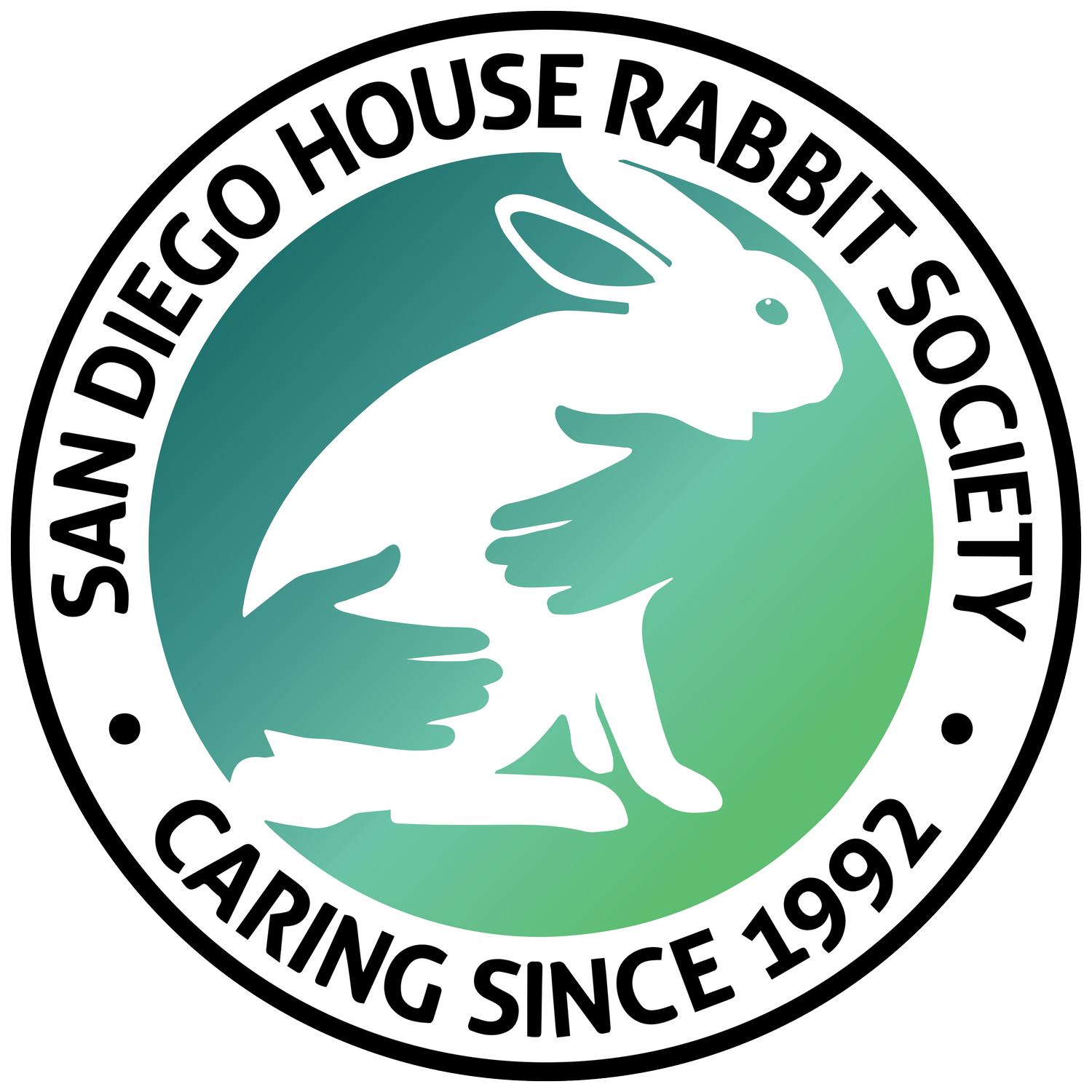The Scoop on Poop
Unlike most other mammals, rabbits produce two types of droppings, fecal pellets (the round, dry ones you usually see in the litterbox) and cecotropes.
Cecal pellets (aka cecotropes) are a special food made by your rabbit, for your rabbit. The cecal pellets are passed from the rabbit and then re-ingested. You may not see a rabbit do this, but when they appear to be bathing their belly and they come up chewing, they have probably just taken up a cecal pellet. Think about the way a cow chews its previously ingested cud. It is from these cecal pellets that a rabbit gets the majority of their nutrition, not from the first passage of food through the gut.
Cecal pellets are partially digested foods that are produced in a portion of the rabbit's digestive tract called the cecum. The cecum contains a wild brew of bacteria and fungi that are normal and beneficial for the rabbit. In fact, the rabbit cannot live without them, since the cecal flora produces essential nutrients (e.g., fatty acids and vitamins) that the rabbit cannot produce on their own.
A normal cecotrope resembles a dark brown mulberry, or tightly bunched grapes. It is composed of small, soft, shiny pellets, each coated with a layer of rubbery mucus, and pressed into an elongated mass. The cecotrope has a rather pungent odor, as it contains a large mass of beneficial cecal bacteria. When the rabbit ingests the cecotrope, the mucus coat protects the bacteria as they pass through the stomach, then re-establish in the cecum
Cecotropes are not feces. They are nutrient-packed dietary items essential to your rabbit's good health. A rabbit usually produces cecotropes at a characteristic time of the day, which may vary from rabbit to rabbit. They usually do this when you're not watching, which might be why some people refer to cecotropes as "night droppings."
Fecal pellets are the other type of dropping rabbits produce, and they produce a lot of them! Rabbits poop between 200-300 times a day. Rabbits are grazing herbivores and they may eat and poop at the same time. A rabbit needs constant access to hay to keep their digestive tract moving.
Anyone who lives with a rabbit has seen a fecal pellet. They are the small, brown "cocoa puffs" that we all hope end up mostly in the litterbox. They are round, relatively dry and friable, and are composed mostly of undigested fiber. Rabbits do not ordinarily re-ingest fecal pellets, though a few rabbit seem to enjoy an occasional fecal pellet hors d'ouevre.
Poop can tell you a lot about your rabbit’s health. See the chart below to find out more.







